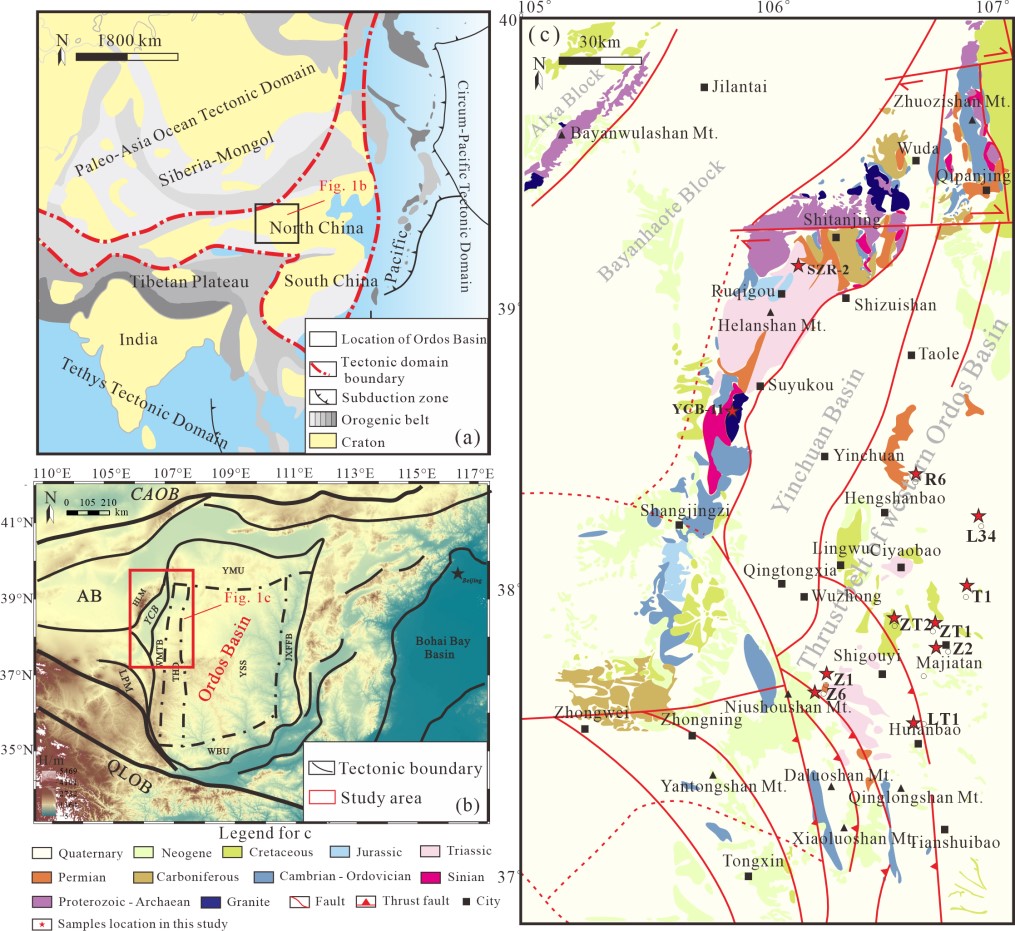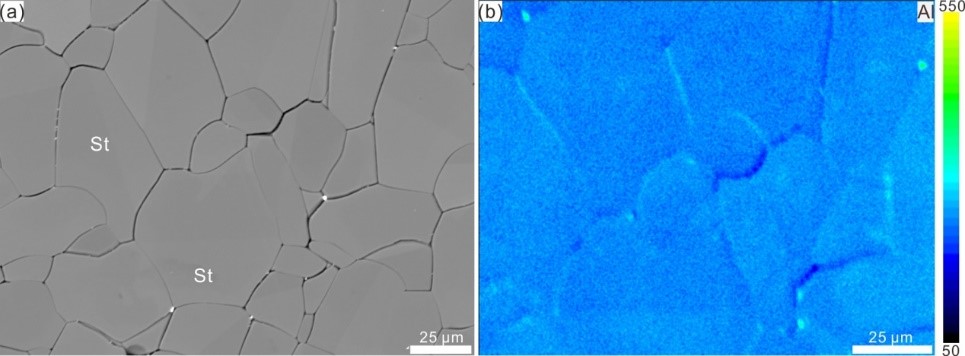 鄂尔多斯盆地位于华北克拉通西部,保存了从太古宙到新生代的沉积地层,是研究中国内陆构造演化的重要区域。盆地西缘位于阿拉善地块、中亚造山带、秦岭造山带以及青藏高原东北缘的交汇部位,构造活动强烈,尤其是自中生代以来的构造变形和多期造山运动,使其成为研究构造演化过程的理想场所。
鄂尔多斯盆地位于华北克拉通西部,保存了从太古宙到新生代的沉积地层,是研究中国内陆构造演化的重要区域。盆地西缘位于阿拉善地块、中亚造山带、秦岭造山带以及青藏高原东北缘的交汇部位,构造活动强烈,尤其是自中生代以来的构造变形和多期造山运动,使其成为研究构造演化过程的理想场所。
 近几十年来板块构造理论的一项重要突破,是认识到大陆地壳可以发生深俯冲到大于80-120公里甚至超深俯冲到大于250-300公里的地幔深度并折返回地表。确定大陆地壳的最大俯冲-折返深度,对揭示地壳物质循环、壳幔相互作用、深部地幔动力学过程以及岩石圈演化具有重要意义。
近几十年来板块构造理论的一项重要突破,是认识到大陆地壳可以发生深俯冲到大于80-120公里甚至超深俯冲到大于250-300公里的地幔深度并折返回地表。确定大陆地壳的最大俯冲-折返深度,对揭示地壳物质循环、壳幔相互作用、深部地幔动力学过程以及岩石圈演化具有重要意义。
 锡是一种战略性关键金属,在航空航天和高科技产业领域应用广泛。全球范围内,锡矿主要为岩浆-热液型,其形成通常与高分异还原性(钛铁矿系列)花岗岩有关。然而,制约锡矿形成规模的关键因素长期存在争议,导致大型锡矿形成的关键控制因素尚不明确。
锡是一种战略性关键金属,在航空航天和高科技产业领域应用广泛。全球范围内,锡矿主要为岩浆-热液型,其形成通常与高分异还原性(钛铁矿系列)花岗岩有关。然而,制约锡矿形成规模的关键因素长期存在争议,导致大型锡矿形成的关键控制因素尚不明确。
 2025年10月11日-13日,由国家自然科学基金委员会地球科学部倡议、中国地球物理学会地热专业委员会主办、大连理工大学承办的2025中国地热学术大会暨深地能源金石论坛于在辽宁省大连市召开,旨在深入交流我国地热领域最新进展和成果,推动地热学科前沿理论研究与工程实践的结合,促进深地能源开发与利用的技术创新。
2025年10月11日-13日,由国家自然科学基金委员会地球科学部倡议、中国地球物理学会地热专业委员会主办、大连理工大学承办的2025中国地热学术大会暨深地能源金石论坛于在辽宁省大连市召开,旨在深入交流我国地热领域最新进展和成果,推动地热学科前沿理论研究与工程实践的结合,促进深地能源开发与利用的技术创新。
 鄂尔多斯盆地位于华北克拉通西部,保存了从太古宙到新生代的沉积地层,是研究中国内陆构造演化的重要区域。盆地西缘位于阿拉善地块、中亚造山带、秦岭造山带以及青藏高原东北缘的交汇部位,构造活动强烈,尤其是自中生代以来的构造变形和多期造山运动,使其成为研究构造演化过程的理想场所。
鄂尔多斯盆地位于华北克拉通西部,保存了从太古宙到新生代的沉积地层,是研究中国内陆构造演化的重要区域。盆地西缘位于阿拉善地块、中亚造山带、秦岭造山带以及青藏高原东北缘的交汇部位,构造活动强烈,尤其是自中生代以来的构造变形和多期造山运动,使其成为研究构造演化过程的理想场所。
 近几十年来板块构造理论的一项重要突破,是认识到大陆地壳可以发生深俯冲到大于80-120公里甚至超深俯冲到大于250-300公里的地幔深度并折返回地表。确定大陆地壳的最大俯冲-折返深度,对揭示地壳物质循环、壳幔相互作用、深部地幔动力学过程以及岩石圈演化具有重要意义。
近几十年来板块构造理论的一项重要突破,是认识到大陆地壳可以发生深俯冲到大于80-120公里甚至超深俯冲到大于250-300公里的地幔深度并折返回地表。确定大陆地壳的最大俯冲-折返深度,对揭示地壳物质循环、壳幔相互作用、深部地幔动力学过程以及岩石圈演化具有重要意义。
 锡是一种战略性关键金属,在航空航天和高科技产业领域应用广泛。全球范围内,锡矿主要为岩浆-热液型,其形成通常与高分异还原性(钛铁矿系列)花岗岩有关。然而,制约锡矿形成规模的关键因素长期存在争议,导致大型锡矿形成的关键控制因素尚不明确。
锡是一种战略性关键金属,在航空航天和高科技产业领域应用广泛。全球范围内,锡矿主要为岩浆-热液型,其形成通常与高分异还原性(钛铁矿系列)花岗岩有关。然而,制约锡矿形成规模的关键因素长期存在争议,导致大型锡矿形成的关键控制因素尚不明确。
 2025年10月11日-13日,由国家自然科学基金委员会地球科学部倡议、中国地球物理学会地热专业委员会主办、大连理工大学承办的2025中国地热学术大会暨深地能源金石论坛于在辽宁省大连市召开,旨在深入交流我国地热领域最新进展和成果,推动地热学科前沿理论研究与工程实践的结合,促进深地能源开发与利用的技术创新。
2025年10月11日-13日,由国家自然科学基金委员会地球科学部倡议、中国地球物理学会地热专业委员会主办、大连理工大学承办的2025中国地热学术大会暨深地能源金石论坛于在辽宁省大连市召开,旨在深入交流我国地热领域最新进展和成果,推动地热学科前沿理论研究与工程实践的结合,促进深地能源开发与利用的技术创新。